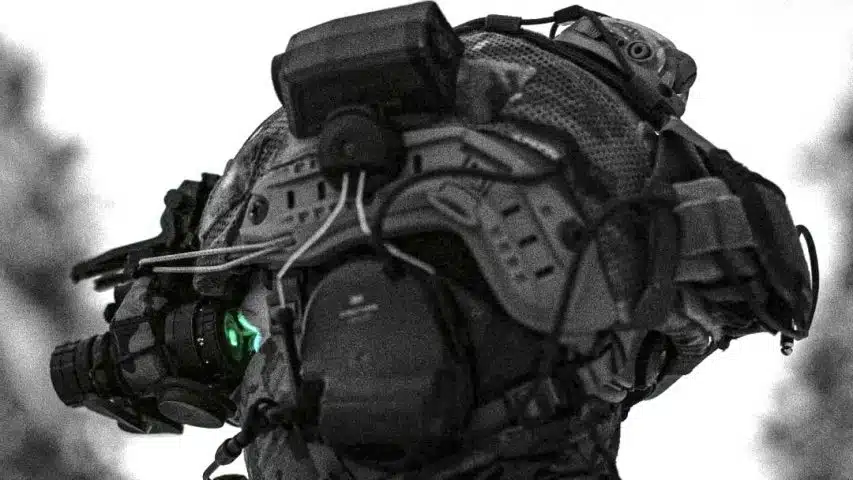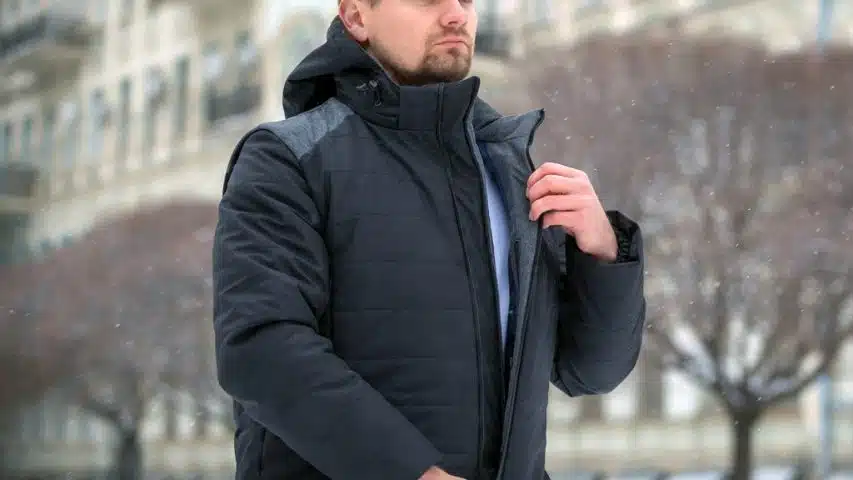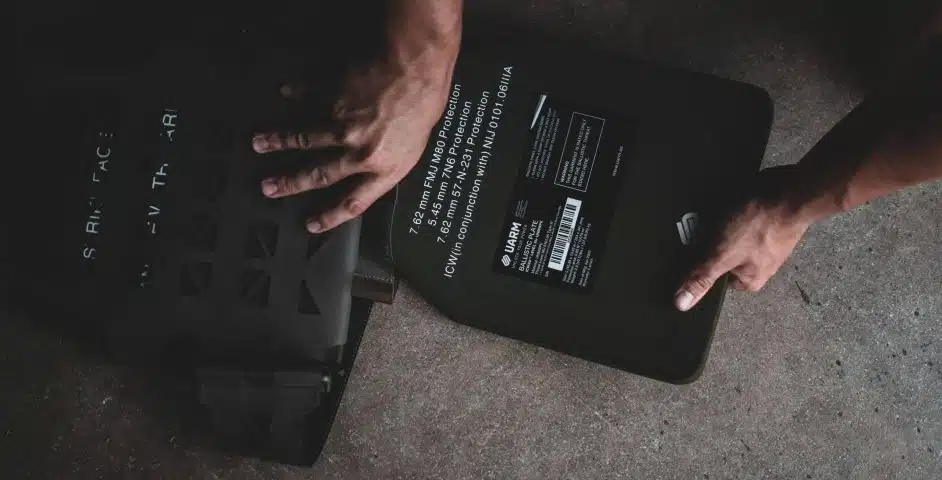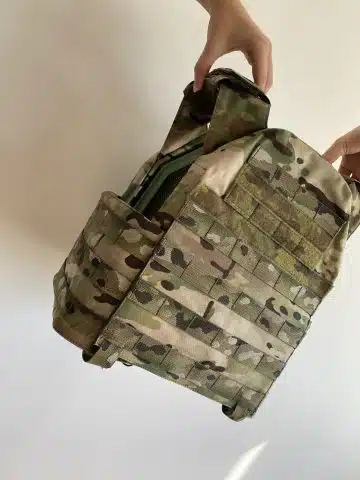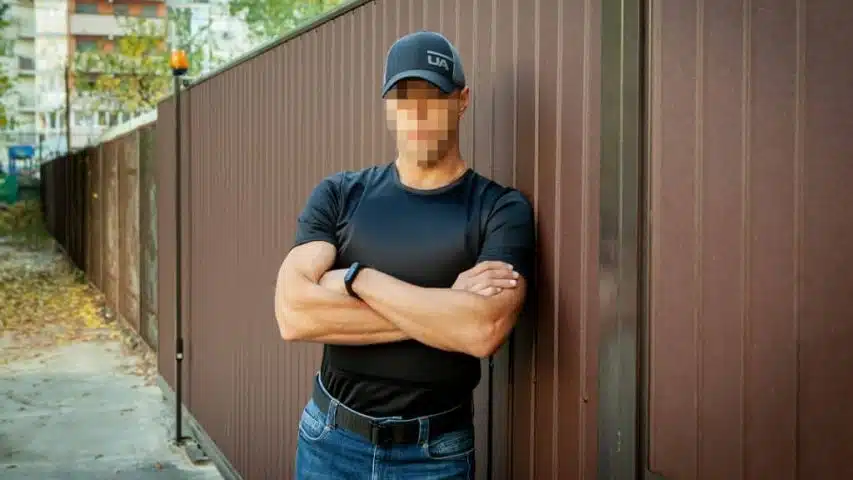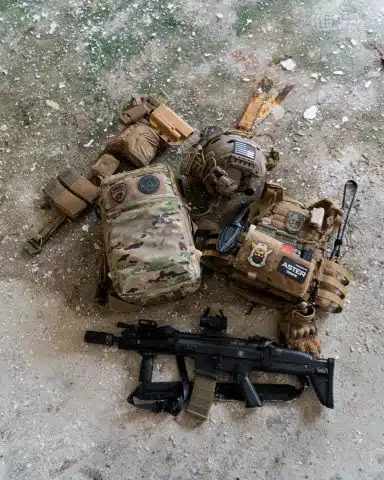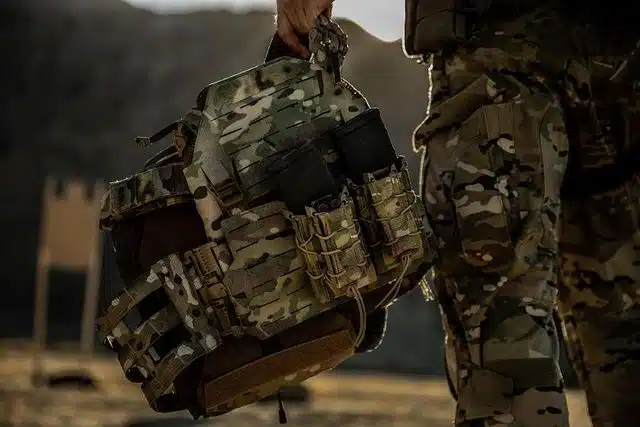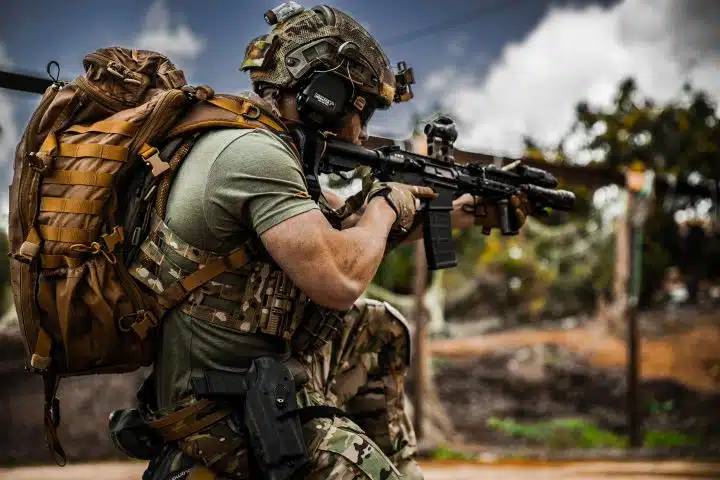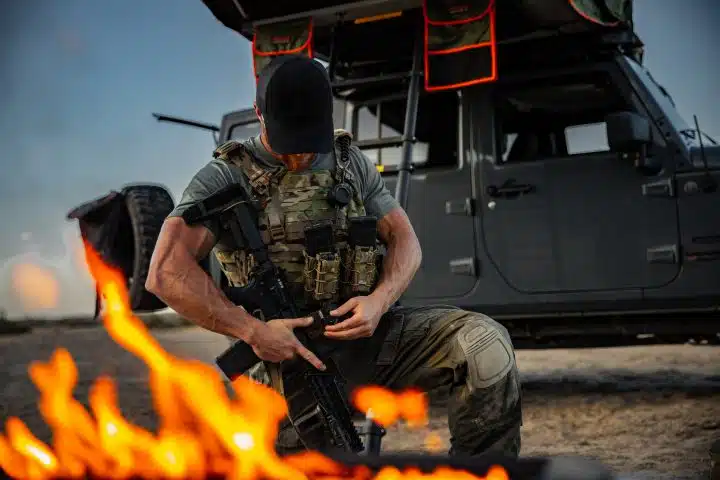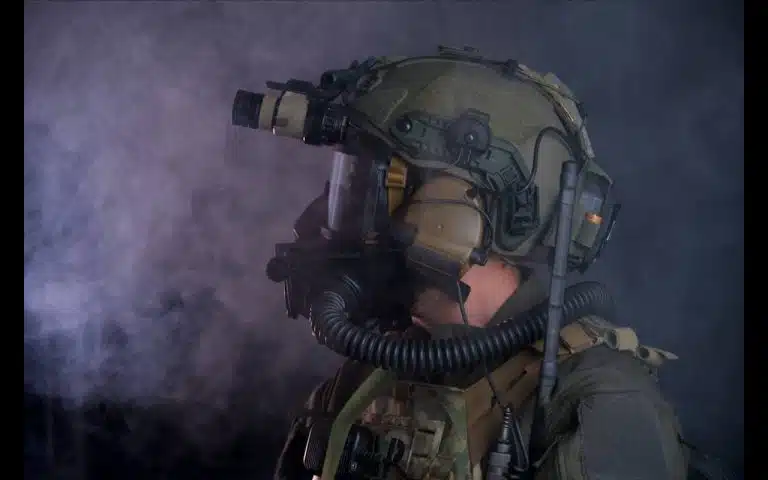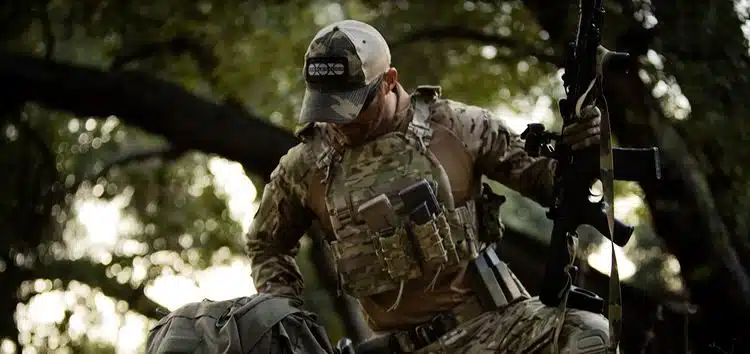The National Institute of Justice, or NIJ, has been founded in 1968 and does all kinds of research and development projects for the Department of Justice. NIJ Ballistic levels standard came on early, as a way to categorize different types of protection against handgun and rifle ammunition.
But, there is more to an NIJ level than just penetration ability. The person behind the vest needs to stay relatively unharmed by any ricochet, shrapnel, or the sheer blunt force trauma of the impact.
Not including body armor that doesn’t fit the standard, there are five levels of protection under NIJ levels. The first three are meant to protect from most handgun calibers, while levels III and IV are designed for defense against rifle ammo.
The NIJ ballistic levels are somewhat broad, but they can give us a rough idea about what type of body armor we should look for depending on our needs. With higher levels of protection, maneuverability will drop quickly, and you won’t be able to hide the armor. But, you will get some extra pockets, and an additional mag can be priceless in a pinch.

Tests and Standards
The NIJ performs rigorous testing on each model or armor that they get, from the smallest handgun calibers to armor-piercing and incendiary rifle rounds. Only armor that can take all of the damage without being dangerous for the wearer can get an NIJ approved level.
Tests will start with regular .22cal ammo in the center of mass and progress in power and angle of impact. The final test is .30cal armor-piercing, and if the hard plate can manage that it will be certified with a Level IV.
There are also separate edged blade protection levels, that are often tested with spikes and swords and don’t translate to ballistic protection.
Development of NIJ Ballistic Levels
Armor started developing the first moment one caveman smashed another one with a large stick. We don’t like getting hurt and will do a lot to protect life and limb from different types of attacks.
As rifles progressed, regular steel was no longer viable to be used as protection. Not only would the plate become way too heavy to be carried around, but the impact would often kill the person behind the plate just as easily.
Modern soft vests were invented in Korea in the 19th century, to fight against the French. This obviously worked, because the Koreans won that war. These vests were later captured by the US Navy after a somewhat successful military expedition in 1882.
By the time of the Great War (WWI), bulletproof vests were already common with the military. As a matter of fact, when Archduke Franz Ferdinand was shot in Sarajevo he was wearing a vest. But, that didn’t do him much good, because Gavrilo Princip shot him in the neck. If the bullet went just a couple of inches lower, it would be caught by the vest and the Austrians would need some other reason to start the war.
From that moment on, vests became layers of soft fabric and were regularly used in conflicts.
But, once the hard breastplate was invented in 1967 the newly formed NIJ knew they needed to categorize them. They made the standard in 1972 which stayed the same until now. While materials changes, as well as some aspects of ballistics, the levels were still able to give a general idea of the material’s hardness and protection level.

Advantages and Applications
From the outside, it may seem that simply having more armor is always better. That is only true in all-out combat situations and deployment. And even there that sort of thinking can compromise a mission if the command is not careful.
‘He who defends everything, defends nothing’ said Frederic the Great, and that goes for body armor as well.
The vest is made to drastically improve your chances of surviving an unwanted encounter. It is not an end-all-be-all, but a tool to use to increase effectiveness and reduce the risk of major or mortal injury.
The person wearing the vest needs to be mobile and able to do all of their tasks without the armor restricting their movement and laying on too much weight on their body. And that is why different jobs and situations work best with different protection levels.
NIJ Level IIa
While there was a point people believed that this type of soft armor was obsolete, that is no longer the case. Level IIa is supposed to protect you from the most common types of handguns, including .9mm and .40cal.
Additionally, new technology allows us to make this type of armor really thin, going as low as 4mm, or less than 1/8th of an inch. This gives a lot of options for concealed body armor and comfortable protective wear in dangerous jobs.
Where it Works Best?
Due to the relatively low weight and easy concealment, this category of body armor is very popular in personal security and different types of first-responder jobs, such as paramedics.
They can be worn for the whole day as a T-shirt or under-vest and doesn’t restrict movement in the slightest.
Pros & Cons
- Very light and flexible
- Easily concealed
- Wraps around the whole torso
–
- Leaves bruising when shot
- Won’t stop a high-velocity (over 1200ft/s) round
- No additional utility
NIJ Level II
The second category is very similar to the IIa but is slightly thicker to protect from those high-velocity bullets. As these are common in criminal circles, the full version is very popular with most police departments.
While there are external carriers for Level II, it is most common as concealed body armor as not to raise suspicion.
As it is roughly 20% heavier, the person planning to wear it for the whole day should be in better shape than the basic model. But, since Level IIa armor is so light, the difference won’t be even noticeable for most people.

Where it Works Best?
Police and private security are the main users of this type of armor. Generally, if you are not meant to do a lot of walking in it, or running, they can be easily worn without any fatigue.
They are a favorite for most police departments around the nation. Because they are generally covert and easy to wear and can be worn the whole day as passive protection, most PDs and sheriff’s offices prefer staffing both beat cops and detectives with this type of vest.
First responders and paramedics may not like the fact that it takes time to put on and off. But any type of urban security service will appreciate the extra protection.
Pros & Cons
- Easy to conceal
- Flexible enough for most jobs
- Some models offer stab protection
–
- Can’t be taken off and on quickly if worn concealed
- Can leave serious bruising
- No utility features for concealed models
NIJ Level IIIa
There might be some versions of IIIa as concealable vests, but the weight increase of ~30% over Level II and ~85% over IIa means that most people will prefer to wear it as external carriers.
Additionally, some models will have a pocket in the front that can house a hard plate if you need it. The added utility and general versatility make this type of armor one of the most universally popular body armor categories worldwide.
Where it Works Best?
Any type of security services where you need the additional utility and also expect larger handgun ammo, such as .357 and .44 magnums.
The great balance of weight and protection make IIIa perfect for anti-criminal protection, regardless if it is done in a private or public capacity.

Pros & Cons
- Will stop a Magnum round
- Still generally light and flexible
- External carriers come with added utility
–
- Not for whole-day use
- Needs comfortable under-armor
- Prevents some types of movement
NIJ Level III
At this category, armors start offering some combat-situation protection but also become much thicker and heavier. As they will prevent some actions to be executed quickly, it is mostly used when there are more people for the task.
As they can protect from 7.62 NATO rounds, it is used as the Army standard and most infantrymen will be equipped with this type of protection.
Where it Works Best?
If you are in a situation where you need an NIJ Level III, you will also want to have a helmet and additional gear. At this point saving on weight is irrelevant, so you should carry additional gear to execute a specific mission.
It is the best choice for specific private security detail, protecting valuable targets during transport, as well as SWAT situations domestically.

Pros & Cons
- Loads of utility features, especially with MOLLE versions
- Easy to repair and maintain
- Rifle ammunition protection
–
- Heavy
- Not flexible at all
- Needs under-armor
NIJ Level IV
By far the heaviest type of armor, with ten times as much weight per area compared to Level IIa. These plates will stop a .30cal AP round that will slice through a wall with ease. It is often used in open combat and warfare situations by infantry that is at an increased risk from sniper fire.
Because of the size and weight, there is little use for this type of armor in domestic situations. With the weight of the armor alone often surpassing 20lbs, it is not something that can be worn daily, just as a precaution.
Where it Works Best?
Open combat and specific SWAT situations, usually against organized opposition military targets.
It is used to protect lives in cases of barrages of AP rounds and can dissipate the force of a bullet that would penetrate steel and concrete.

Pros & Cons
- Will stop an AP round
- Allows for a lot of utility features
- Generally well balanced
–
- Heaviest of all plates
- Needs serious wardrobe adjustments to conceal
- Not ideal for all carrier designs
Non-Standard Protection
Apart from the standard NIJ ballistic levels, there are those that focus on protection against blasts, stabbing, slashing, and other types of injuries that may happen in a difficult situation.
These would stand outside of the ranking under different codes and do not apply to the ballistic standard.
Additionally, other foreign agencies might use other types of categorization. But, even these articles will need to be certified by the NIJ to be sold as body armor in the United States.
Finally, while some articles may cite that they are ‘comparable’ to some type of NIJ level of protection unless they are certified you should not believe everything you read online.
Conclusion
There are many jobs and even more, situations where having some type of body armor will save your life. But, once we know what NIJ ballistic levels mean, we will realize that bigger is not always better.
Almost two-thirds of firearm assaults in the US are made with a .9mm handgun, with the rest usually coming into the small handgun category as well. Because of this, we know that in most cases it is much better to have a light and comfortable piece of armor that you can wear every day.
Optimal security is the goal of any protection. While we hope that day will never come, you don’t want to leave your vest at home at the moment disaster struck.

